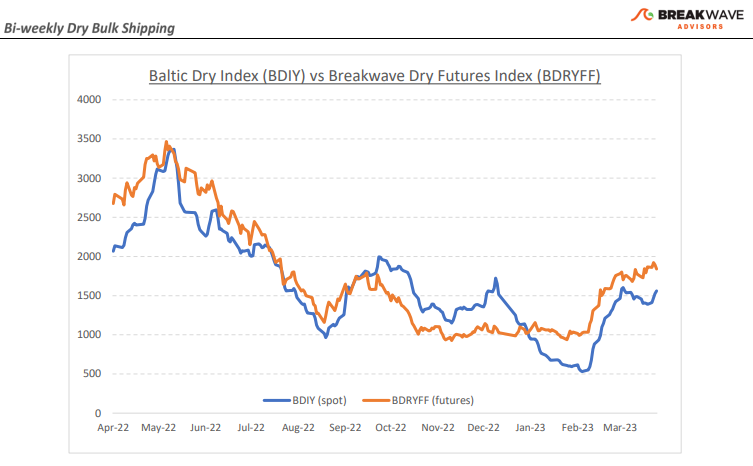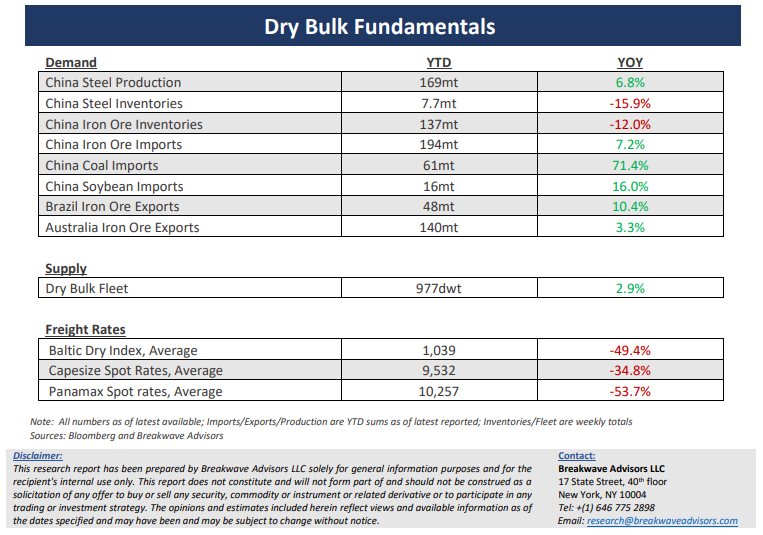·Entering Q2 on a high note – With spot Capesize rates some 6,000 above the level at the same time last year, the outlook seems promising. The futures market senses such potential and the expectation for the rest of the year, based on freight futures, calls for Capesize rates to average above 20,000 for the next three quarters. We also share such optimism, while we expect spot rates to even touch new 52-week highs in the process. However, for the very near-term, we remain neutral, and we continue to believe a range-bound market is in the cards: The potential development of a cyclone in West Coast Australia combined with relatively amble vessel supply in the Atlantic points to limited upside, while at the same time demand from both Brazil and West Africa for iron ore cargoes should prevent any significant deterioration in the spot market. More importantly, the sub-Capesize segments are also quite active, pointing to an overall healthy market for dry bulk shipping. Structurally, the market should remain strong aided by limited supply growth and healthy demand from China, something that points to a longer-term upcycle underneath the ordinary short-term gyrations that shipping usually provides. Investors should look at dips as an opportunity to potentially add to positions, although the broader macro picture ex-China is always a reason for concern, as any spillover effects into China especially as it relates to finished goods exports, could have a negative impact on shipping demand.
·Some stability for China’s real estate sector, but more is needed for a decisive turnaround – Some rather encouraging data coming from China’s ailing real estate sector was enough to generate bullish arguments as it relates to a potential upturn in construction and housing, but such a turnaround remains fragile. Confidence in the government’s pro-growth plans is low and thus there is no clear momentum for a strong recovery. In addition, outside China, demand is weakening, presenting another headwind for the country’s all important export market. Although we believe the government’s 5% growth target for 2023 is conservative, especially given the considerable pro-growth support of the last few months (RRR cut, special bond quotas, less restrictions for developers, higher budget deficit among others), the all-important real estate sector is yet to see some sparkle. On a more positive note, Chinese steel mill margins continue to improve and now they stand at nine-month highs, providing some much-needed boost for the steelmakers’ balance sheets which in turn should aid iron ore trading going forward.
·Dry bulk focus shifts back to fundamentals – Following a period of high uncertainty and significant disruptions across the commodity spectrum, the gradual normalization of trade is shifting the market’s attention back to the traditional demand and supply dynamics that have shaped dry bulk profitability for decades. As effective fleet supply growth for the next few years looks marginal, demand will be the main determinant of spot freight rates with China returning back to the driver’s seat as the dominant force of bulk imports and thus shipping demand.


